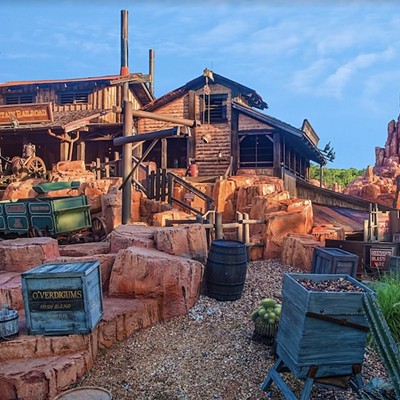When a hippo was spotted dead in a wading pool June 2 at Disney's Animal Kingdom, it became at least the 32nd animal to die at the new theme park. But Disney encountered problems with its new pets long before the park officially opened on April 22. In the following excerpt from "Team Rodent: How Disney Devours the World," novelist and Miami Herald columnist Carl Hiaasen describes the company's handling of the strange death of a rare black rhino as Disney set about stocking its new park.
Team Rodent made the bold move. It began, typically, by recruiting some of the top zoological experts in the country. Then it started shopping for wild animals. One of the first to be acquired was a rare black rhinoceros, a five-year-old female. Only 3,000 of the animals are left in the world. Disney said it had purchased this one from a wild-game ranch in Texas. If all went as planned, the rhino would soon be released in a man-made African-style habitat, where it would be fed, watered and protected for the rest of its life.
Again from the press kit: "Disney Imagineers have created tropical forests and jungles, streams and waterfalls, and savannas and rocky ridges -- fascinating lands filled with natural beauty, where animals and visitors will participate in the unrehearsed dramas of life in the wild."
Unrehearsed -- finally! No more remote-controlled crocs. Animal Kingdom would be the real deal, "unrehearsed drama," meaning: If the critters decide to fight or fuck, we won't stop 'em.
Tragically, the young black rhinoceros never got a chance to test the limits of her Imagineered freedom. She died abruptly in the fall of 1997, months before the Disney zoo opened.
Discreetly the carcass was transported to the University of Florida in Gainesville, where a team of veterinarians performed a necropsy. It didn't take long to discover the cause of death, lodged deep in the animal's guts: a branchlike object, 21 inches long and three-quarters of an inch in diameter. One end was sharp, having been cut with either a machete or saw. The stick had punctured a lung and ignited a terrible infection. Disney's rhinoceros had died of pneumonia.
For doctors, the larger mystery was how the instrument of death had gotten inside the beast. Rhinos browse on grasses, leaves, twigs and shrubs, and they're not always well-mannered eaters. It was conceivable that an exceptionally hungry animal could slurp a 21-inch branch without chewing it. And that would have been the working theory about Disney's dead black rhinoceros, that it had ingested the lethal stick from a pile of vegetation, cut for it as food by well-meaning handlers.
Except for one problem: The stick was found at the opposite end of the animal; specifically, in the last segment of the long intestine, within arm's length of the rectum.
That strange and unsettling fact didn't fit the sloppy-eater scenario. A rhino's digestive tract is similar to that of a horse -- twisting, lengthy and convoluted. The doctors at the necropsy couldn't imagine how such a long, sharp object could travel almost the entire circuit of a rhino's intestines before snagging. "Hard to believe," one of them stated flatly.
Yet the alternative seemed unthinkable: that a person or persons unknown had savagely inserted the stick via another orifice. But who? Why? And, for God's sake, how? Although the Disney rhino had been known as exceptionally docile, it was mind-boggling to suppose she might have stood long enough for ...
Back and forth went the sensitive discussion, and ultimately the veterinarians chose the circumspect approach: They declined to make it an official conclusion about how the branchlike object might have entered the mammal, or from which end.
However, the doctors did agree on one important finding: The nearly ossified condition of the intruder proved it had been inside the rhino's intestines before Disney had taken delivery of the animal. The news must have been a huge relief to company executives, providing such a strong defense against accusations of neglect or cruelty. There'd be no need for a delicate inquiry as to who, if anyone, had so viciously violated the young pachyderm -- whatever happened had taken place before the rhino had arrived in Orlando. For added insurance, Disney botanists reclaimed the death stick and analyzed it. They reported that the tree it came from wasn't native to Florida.
Still, Team Rodent remained worried. No upbeat spin could be put on a story about an endangered creature expiring under mysterious circumstances on company property. A wall of secrecy went up. Anyone with knowledge of the rhino's demise was instructed to keep quiet, and to this day the attending veterinarians remain silent on the matter.
From the book "Team Rodent" by Carl Hiaasen. Copyright 1998 by Carl Hiaasen. Reprinted by arrangement with Ballantine Books, a division of Random House Inc.

















